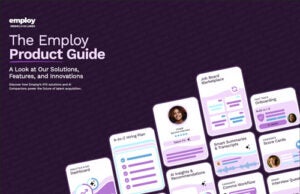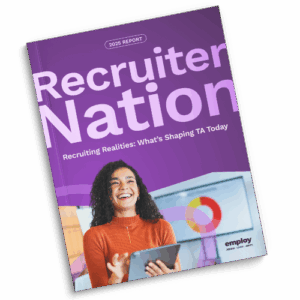Using your talent analytics to drive your strategy can be tough, especially when you’re sitting on a treasure trove of data. While you probably already use said data to guide much of your day-to-day and long-term decision-making, ask yourself:
Are you looking at the right recruiter productivity metrics? And how can you ensure your team continues to get more efficient as you scale your recruiting?
We asked four talent experts to share their advice on how to effectively and efficiently measure recruiter productivity — and take action on that data. These include:
- Melissa Thompson, Vice President, Talent Acquisition at McGraw-Hill
- Mike Bailen, VP of People, Lever
- Meredith Herberg-Waldron, Global Talent Operations Manager, Eventbrite
- Mark McFarland, Senior Manager of Talent Acquisition at Relativity
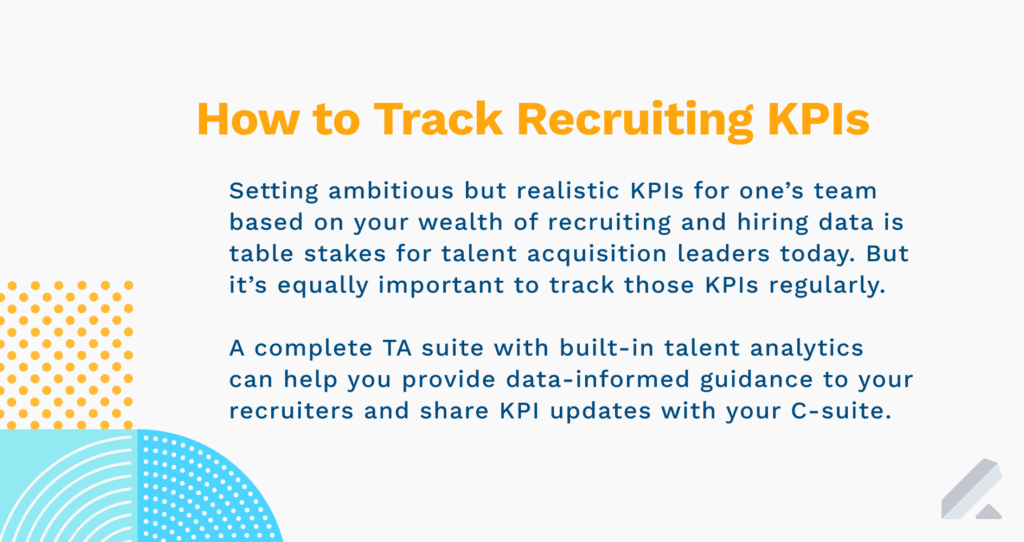
Recruiter productivity tip #1: Learn to forecast talent like a sales leader
It’s become clear the core of talent acquisition has its roots in sales and marketing.
From a sales perspective, recruiters have volume metrics. From a marketing perspective, recruiters have funnel or pipeline conversion metrics. The most successful recruiters not only understand how these are measured, they drive results to ensure continuous improvement.
Melissa offers three tangible measurements to ensure you think like a sales leader:
- The Recruiter Scorecard: “Recruiters on my team all have scorecards that measure things related to volume, time, quality and effectiveness. This monthly metrics report clearly defines what good looks like and where recruiters have opportunities to improve. Recruiters are challenged to continuously progress and understand that the scorecard drives their annual performance rating.”
- Business Hiring Reviews: “This quarterly report shares key recruiting data trends with business leaders and HR business partners. The business review looks back at what has been filled YTD and evaluates data related to time and source. It also provides a snapshot of current activity understanding volume, time, and location.The conversation might dive into the reasons why roles are aging or what key projects will need targeted talent in the coming quarter.”
- Customer Experience: “The most valuable metric to improve candidate experience is Net Promoter Score. I use this metric to measure the experience for managers and candidates. The TA Leadership team does a quarterly deep dive into the data which can include verbatim feedback in addition to the aggregate NPS score. We find that there is rich information in the verbatims and have pulled specific opportunities to improve the discovery session, quality of candidate slate and dispositioning unsuccessful candidates.”
“Early in my career, I worked at Dell where there were posters on the wall that said, ‘If you can’t measure it, you can’t manage it,’” said Melissa. “More than a decade later, the success of my team is based on measuring, managing, reviewing and improving recruiting metrics.”
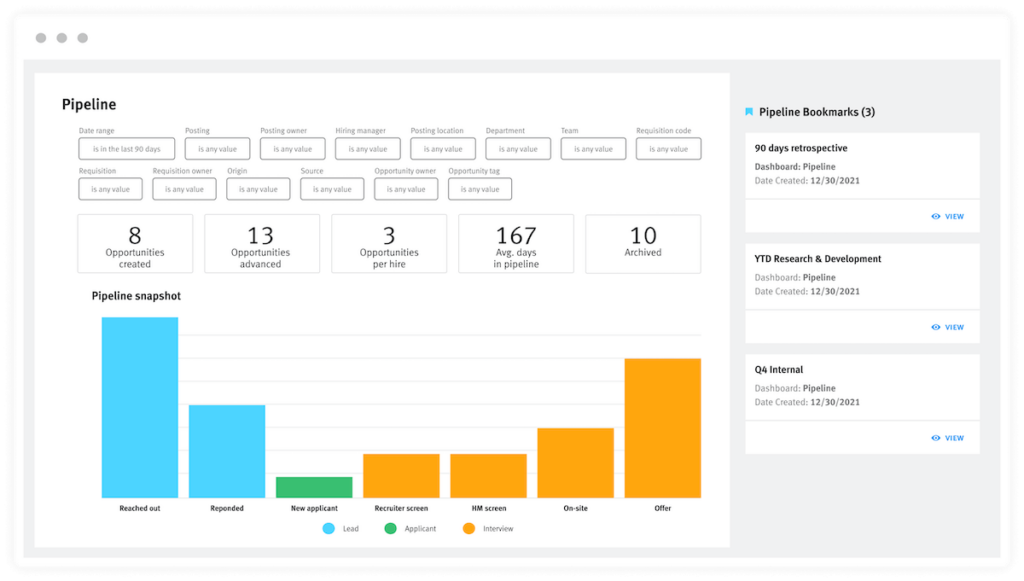
Recruiter productivity tip #2: Use data to advise on where the org can scale
Oftentimes, recruiting and talent acquisition leaders are seen as an adjunct function to fill roles when the company asks for it. Nowadays, talent teams have earned a first seat at the table to determine where and when to expand based on strong labor and talent data.
When Lever decided to expand to Toronto just this year, Mike quickly ran the numbers to see which areas would not only be receptive to product, but also achieving and meeting the talent goals required to expand the company.
Like many companies today, Lever is open to remote work when the time calls for it to ensure we aren’t missing growth goals when talent comes up short.
Meredith is also no stranger to digging into metrics as their company grows. She’s seen the company grow from 400 employees to over 1,100 since starting at Eventbrite in 2014, with the launch of their Nashville office.
“With the addition of LeverTRM and its analytics, we’ve been able to work with the team at Lever to create custom dashboards that allow us to cut our data and drive metrics by function, team, recruiter, location, and then some,” said Meredith.
“This has been instrumental insight into how we’re thinking about hiring on a global scale.”
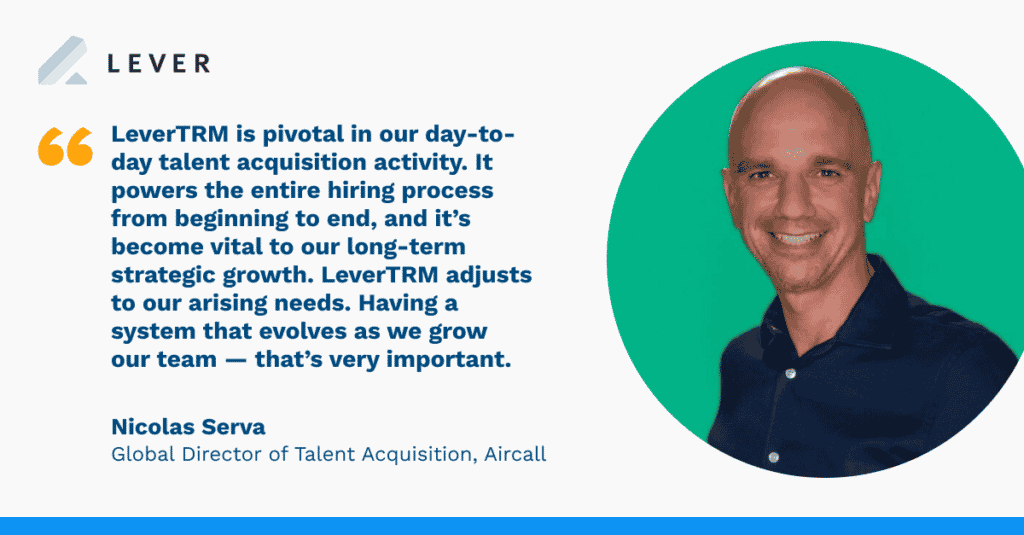
Recruiter productivity tip #3: Know the limitations within the talent data set
Mark said he believes every good recruiter needs to be a good sourcer as well — even though his team has dedicated sourcers. But, he doesn’t use time to fill as a performance metric.
Specifically, Mike noted his recruiters are focused on quality of hire and work with the business to ensure they are given the time to find quality candidates to be assessed.
Why? Because time to hire can be a limiting metric if it’s the only thing you are looking at.
Instead, the team at Relativity use a key hires model to report to the C-level. Recruiters provide a roll up of activity and status of the search on a weekly basis, which is then viewed by leadership.
Their Chief People Officer regularly discusses with executives the updates on key hires, and reminds them of the commitments they need to make to assist in finding talent for the business and help to set recruiters up for success.

Measuring and taking action on recruiter productivity insights essential today
It takes having the right recruiting software and tools in place as well as robust, real-time data at your fingertips to ensure your talent acquisition team is set up for success.
Implementing scorecards to ensure you can forecast like a sales leader and add predictability to your hiring will show executives in your C-suite that you are proactive at mitigating risk and looking out for your team’s and the company‘s best interest.
Talent acquisition leaders have finally earned their seat at the table to ensure they are driving company growth conversations.
Knowing how and where to scale based on talent metrics gives leaders a strategic edge. But, remember: Only looking at some data and not others limits your view.
Chat with us today to learn about LeverTRM, including the Talent Leader Summary dashboard in Visual Insights, which helps TA directors track recruiter productivity with ease.











